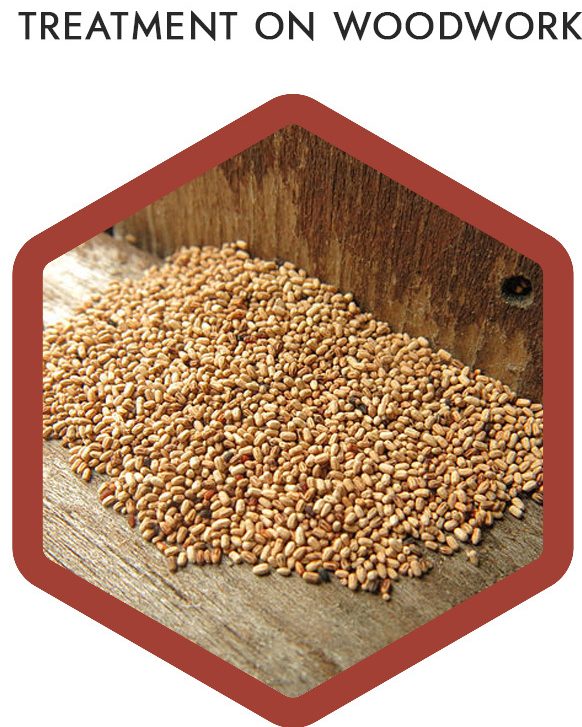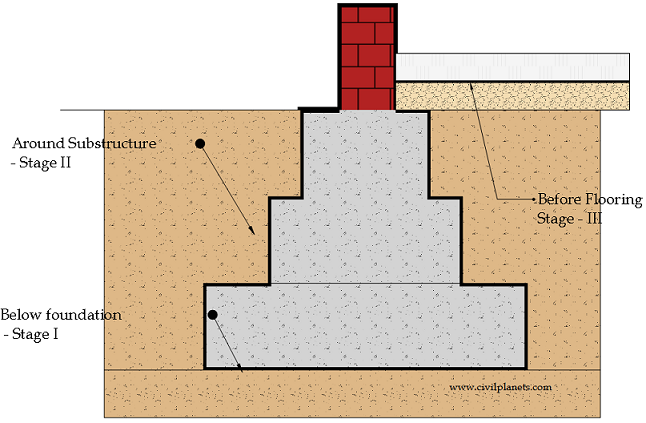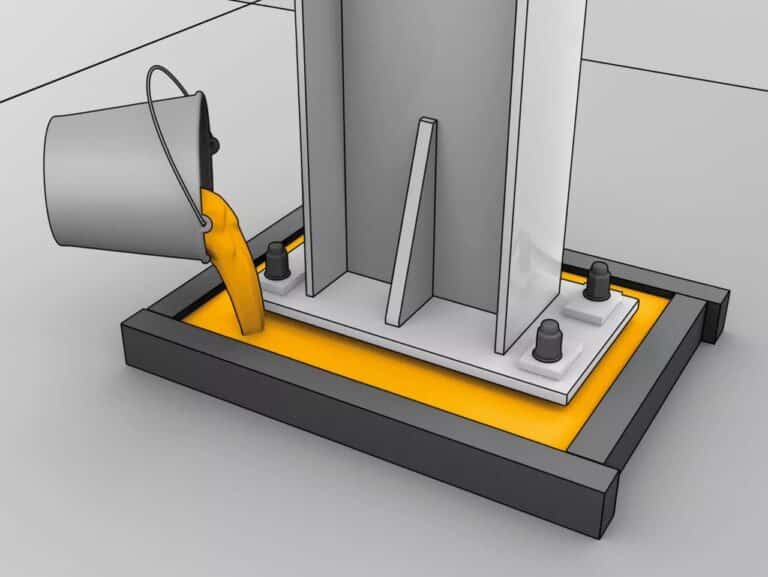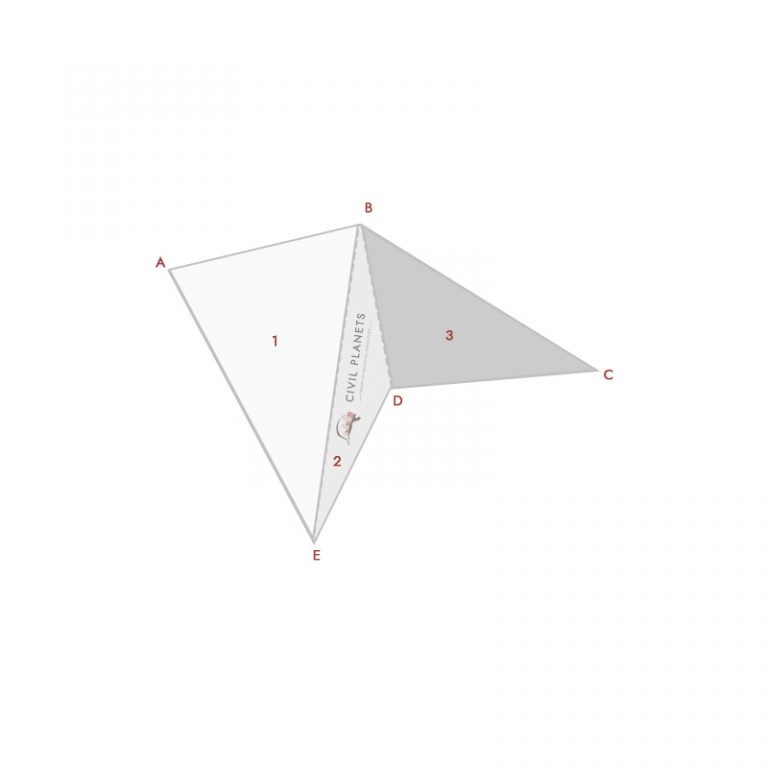The termites that improve soil pH level, water content, and porosity by cycling dead particles contribute more to the environment. Simultaneously, it becomes harmful to human-made structures such as untreated timbers, underground cables, concrete, embankments, etc.
What is the anti-termite treatment?
The treatment process that is conducted to avoid these termites’ entry into the structure using chemicals is an anti-termite treatment.
The purpose of this is to provide a chemical barrier between the termites and the structure.
Why?

Because the termites that enter the building via underground
- Starts to damage the concrete structural integrity
- Starts to eat the wooden particles and make them porous
- Leads to extensive repair and rehabilitation works
Can termites eat concrete? – Absolutely No!.
Wood is the preferred food for termites, but if the concrete obstructs the wood, then termites will make the tiny holes in the concrete to get the wood. The holes are formed as cracks and affect the foundation strength.
Termite Entry Points
The locations where the termites likely to seek entry are listed below
- Floor Expansion Joints
- Junction (Gaps) of walls and floors (the result of shrinkage cracks)
- Floor surface
- At construction joints
Anti-termite Treatment Procedure
According to the time of application the treatment has been classified as
- Pre-construction Anti-termite treatment
- Post-construction Anti-termite treatment
People often overlook the Pre Construction Anti-termite treatment.
The post-construction anti-termite treatment not only costs more but also affects significant strength and durability of the structure. It is better to prevent them at first.
Anti-termite Treatment Chemicals
Either one of the below chemicals can be used for the treatment as per the Indian standard.
| Chemical | Concentration by Weight |
| DDT | 5% |
| BHC | 0.5% |
| Aldrin | 0.25% |
| Heptachlor | 0.25% |
| Chlordane | 0.5% |
| Chloropyriphos20% EC | 1% |
| Lindane 20% EC | 1% |
A certified and experienced agency should execute the Anti termite treatment as per the below mentioned IS standards.
| IS CODE | DESCRIPTION |
| IS 6313 Part I | Constructional Measure |
| IS 6313 Part II | Pre-construction Anti Termite measure |
| IS 6313 Part III | Treatment for Existing building |
Pre-construction Anti termite treatment procedure
The layer of soil in immediate contact with the foundation and floor structure of a building is treated with chemicals to kill or repel the termites is known as pre-construction anti-termite treatment.
- Top & sides layers of the foundation trench
The purpose of anti-termite treatment is to provide a chemical barrier around the foundation against the termites.
Materials and Equipment Requirement
- Chlorpyrifos 20% EC (Chemical) or Lindane 20 EC
- Add 1 part of Chlorpyrifos 20% EC with 19 parts of water (1:19 ratio)
- Earth driller machine
- Measuring cane (20 Liters)
- Sprayer
Procedure
- The earth’s surface should be dry and clean.
- The chemical should be injected into the ground at three stages in a specified ratio.
- In the first stage, below the PPC, the earth’s surface should be drilled in 12mm diameter and 300mm deep at 150mm interval. The chemical should be injected at the ratio, as mentioned above of 5 litres per square metre.
- At the second stage, the building’s substructure, surrounded by earth, has to be treated with the chemical by 7.5 Liters per square metre. In this stage, the chemical shall be injected at 450mm deep and 150mm distance from the substructure.
- At the third stage, before laying the flooring, the inner plinth wall portion should be backfilled by healthy earth, and it should be well compacted. The chemical treatment will complete, as mentioned above, at a ratio of 5 litres per sqm.
Post-construction Anti Termite Procedure
Post-construction Anti Termite
Applying chemicals to the existing building to eliminate the termite infestations is called post-construction anti-termite treatment.
Treatment Procedure
- The building should be thoroughly examined for the infestation spread in and around the building.
- The next step is to remove or destroy the termites located inside the building areas such as inside walls, ceiling, conduits, switchboards, etc.
Treatment Around Structure

- The soil adjacent to or under the building should be treated with insecticides to repel the termites.
- Using a 12mm mild steel rod, make a series of holes at 150mm intervals. The chemical shall be injected at 300mm deep at the ratio of 7.5Liters per sqm.
- But the ratio and depth will be different based on the size of the foundation because the chemical should reach the ground to restrict the termite’s entries. If already termites attack the household items, then we have to apply the chemical to the material by the spraying method.
Treatment on Masonry Construction

- Termites seek entry to buildings through masonry foundations. It should be treated with chemicals.
- Termites at masonry can be arrested by drilling holes at a 45-degree angle downwards at the plinth level on both sides of the wall and applying chemical emulsion at 300mm intervals to a maximum of one litre per hole.
- The drilling holes should be drilled at critical corners, such as wall joints, doors, and window frames embedded.
Treatment at woodwork contact points
- Existing woodwork directly at rest on the floor should be adequately treated with chemicals by applying chemical emulsion at drilled points.
- Drilling holes should be 6mm deep and 45-degree angle downwards.
- The chemical emulsion should be applied up to refusal or a maximum of 0.5 litres per hole.
- The hole should then be appropriately sealed.
Treatment of Woodwork

- Treatment should be done only on slightly damaged woodworks by using oil or kerosene-based chemical emulsion.
- If the termites have entirely ruined the woodwork, it should be replaced with new timber, and two coats of the above chemical emulsion should be applied.
- Any woodwork that is in immediate contact with the structure should be treated, such as purlins, shelves, door frames, and window frames. The drilling holes of 3mm should be made with a centre to a centre minimum of 150mm.
Treatment on Electrical Fixtures
- If the termite attack has been noticed in electrical fixtures such as on switch boxes, it should be removed, and space should be treated with malathion dust powder.
- After the chemical application, the box should be refixed.
As you can see, the post-construction treatment costs more but damages almost all parts of the structure if it goes unnoticed. So It is better to embrace the pre-construction anti-termite treatment. It is economical too.
Happy Learning 🙂





3 Comments
Very nice 👍 and use full information
Thank you for this informative blog. I have 3 questions:
1. How does the concrete structural integrity gets affected? – How does termites affect it and how does the post construction anti-termite treatment affect the concrete structural integrity?
2. How long does the anti-termite treatment effect last in a building (post construction)?
3. Is it worth while to remove the flooring of an existing building and treat the soil?
Very informative. Good explanation. 👍